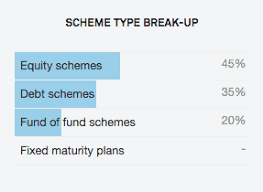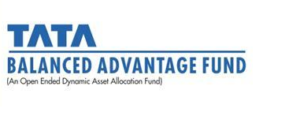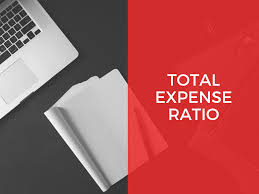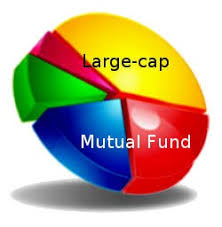A smart investor must be familiar with features of different types of mutual fund schemes. Each scheme carries its own pluses and minuses and offers various degrees of risks and rewards. Selection of scheme must be linked to the risk profile of the investor. An understanding of the features of different types of mutual fund schemes will enable investors to take informed decisions. There are many types of MF schemes. But most prominent among them can be grouped under eight mutual fund schemes. The details of different schemes are as follows:

Equity Funds ( or Diversified Equity Funds ): These schemes invest in the stock market and are the most popular kind of MF schemes. The fund managers study different companies and buy stocks that will provide capital appreciation or dividend over a period of time. Investments are made with the objective of buying at a low price and selling at a higher price. The profit is distributed amongst investors as dividend or it gets added to the assets of the mutual fund, which increases its NAV.
An investor can opt to receive regular dividends (Dividend option) or choose to take advantage of the growth of asset ( Growth option). Dividends are declared at periodic interval. The frequency and value may vary from scheme to scheme. Dividend gets automatically credited to the account of the investor through ECS/NACH. In growth options, the NAV increases and benefit can be encashed by selling the units at a higher NAV.
The risks associated with equity MF schemes are on higher side, but at the same time offers better return. Hence the scheme is best suited for investors ready to accept better returns at better risks. Ideal investment horizon is medium to long – term period ( 3 – 5 years ) or more, though the units can be redeemed at any time at the prevailing NAV.
Within equity or diversified equity funds, there are many sub – categories like large cap funds, large and mid cap funds, mid and small cap funds, multi cap funds, etc. Here, “cap” represents market capitalization, which indicates the size of the company in terms of its stock value. This is arrived at by multiplying the number of shares outstanding and the market value per shares. Reliance Industries, Infosys, HDFC, SBI, etc are examples of large cap stocks. Investing in a large cap mutual fund is less risky. Investments in mid-caps and small caps carry higher risks with potential to offer higher returns. Over a period, these stocks migrate to large caps based on performance and growth as in the case of Infosys which started as a small cap.
Sectoral funds: These schemes too invest in the stock market. The major difference between equity funds and sectoral funds is that sectoral schemes invest in shares belonging to one or a few sectors. For example, they may invest in banking stocks or pharmaceuticals or infrastructure. These scheme to follow the objective of equity funds ie to buy low and sell high, but by investing only in companies belonging to the specified sectors. The return of the scheme depends on the performance of chosen sector. Sectoral fund are high risk investment option because of the dependence on the performance of chosen sector.
Index Funds (or Passive Funds): The schemes under index funds also invest in the stock market but only in those stocks that are part of a particular index like the SENSEX, Nifty, or other index mentioned as part of investment objective. These mutual fund schemes invest in the companies constituting the index in the same proportion as the weightage of that company in the index. If a company has 2% weightage in the index, the investment in that company’s stock will be 2% of the value of the index mutual fund scheme. Index funds are also known as passive funds as changes (buying and selling of shares) happen only when some company is dropped from the index and replaced with another company. Index funds are less riskier than Equity or Sectoral Funds as indexes are constituted by companies having good performance, liquidity, volume of trading etc. The returns from index MF schemes are comparatively lower.
Balanced Funds: These funds aim to balance between growth and income by investing in the stock market as well as in debt instruments. The proportion is disclosed beforehand. Usually, this is 60% or more in equities and 40% or less in debt. The investment in bonds, government securities, etc makes the NAV’s less volatile than pure equity mutual funds. Past performance and the proportion of investments are the two factors to be considered while investing in balance MF schemes.
Debt Funds: The objective of MF schemes under debt funds is ensuring a steady and regular stream of income to investors by way of dividends. Unlike equity based schemes that aim for capital appreciation, debt funds aim to provide regular income. Debt funds are safer than equity funds as they invest in more secure assets like bonds, debentures and government securities. The NAVs of debt funds witness lesser volatility. Invest in debt funds is most suited as age increases as at that age regular income and security of funds become prime concerns. Dividend is tax free in the hands of recipient. The government chargers dividend distribution tax (DDT ) on the dividend announced by debt mutual funds. Hence, the tax is deducted at source and is paid by the mutual fund.
Monthly Income Plans (MIPs): Monthly Income Plans (MIPs) do not guarantee a monthly income, but strives to provide a regular stream of income. MIPs pay dividend monthly, quarterly, half – yearly, or annually. MIP’s invest around 80% to 90% of their total funds in debt securities comprising of bonds, debentures, government securities to ensure safe, regular returns. The remaining amount ( 10 – 20%) gets invested in equities that ensures higher returns. MIPs are best suited for investors who want to earn regular returns at a better rate of return than pure debt funds.
Fixed Maturity Plans (FMPs): A fixed Maturity Plan is a close – ended MF scheme that invests in treasury bills, government bonds, corporate bonds and other kinds of debt instruments. Most of other mutual funds can be bought at any time. But, FMPs can be bought only during a limited period of 2 – 3 days. They carry a fixed tenure ranging between less than a month and a few years.
FMPs offer steady returns for fixed tenure and this makes them similar to a Bank Fixed Deposit. But, Bank deposits guarantee a fixed return whereas an FMP only indicates the interest that can be earned. Since debt is less volatile than equity, FMPs normally meet the interest projections. Further, the interest earnt from a bank fixed deposit is taxable as per the investors income slab. But the interest earned from growth FMPs held for at least 3 years get the benefit of indexation leading to better tax efficiency.
Equity Linked Savings Schemes (ELSS) also known as Tax Saving MF scheme is another highly attractive investment option within MF schemes. It carries a lock in period and offers tax benefit under section 80 C. Please go through the article Equity Linked Savings Scheme (ELSS) to have a thorough understanding of the scheme.
All these mutual fund schemes can be open – ended funds or close – ended. Click on Closed End and Open End Mutual Fund schemes.
Based on the prevailing norms of SEBI, the regulator of mutual fund industry in India, mutual fund houses are required to offer investment options under five types of schemes. The details of these schemes are covered under the article Categorization and Rationalisation of MF Schemes- SEBI Directive. However, the above terms are still being used widely.





Be First to Comment